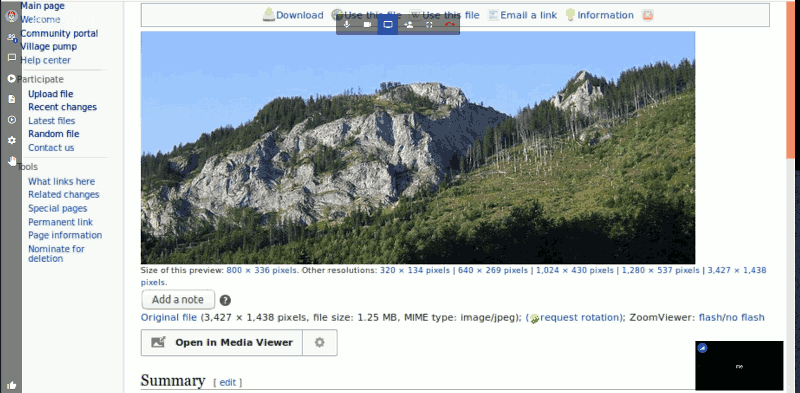The meet-in-real-life, face-to-face interview may be the standard for qualitative user research – but other methods of talking and observing your users are more then just alternatives to it and may have their own unique advantages (and disadvantages).
Our initial use case for online interviews/observation was getting access to remote participants. International communities like Wikidata’s are widely distributed, which makes it hard to visit people. As well, participants already use the web as means for communication.
 Image: Remote Research on commons using [meet.jit.si](https://meet.jit.si/
Image: Remote Research on commons using [meet.jit.si](https://meet.jit.si/
Compared to face-to-face interviews, there is an obvious loss of direct feedback on facial expressions, body posture cues as well as a lack of seeing the physical environment: Papers, periphery, sticky notes.
However, what happens on the screen may be seen more easily, since it can be shared and with permission of the participant, recorded. Both can be more tedious in a real life interview, where the participant may often cover the screen with their body and where you would need to setup a high-res camera or a screenrecording app on their computer. Even if you record, you should still take notes 1.
There may be also more subtle gains. Since the remote interview can feel less intrusive than the researcher being physically present, it is possible that the participants feel more at ease and are more willing to disclose information 3. This may apply if one – like we do – do research with participants from online projects who may be unwilling to disclose their real life identity but have no problems meeting in the virtual space 2.
I did also once try interviewing by chat. I was thrown into it, since the connection for a call was not working. It was an interesting experience. The most obvious advantage is that you get an automatic transcript. The most obvious disadvantage was managing the flow of the conversation without the usual "hmm"s and "wait…"s from the participant. Not knowing (at least via the usual cues) if the conversation is moving forward is a bit distressing at first.
One could go all in with it and choose email and be independend not only from a certain place to meet, but also from choosing a certain time. This, I never tried (though conversations on wiki-talkpages are similar). Opdenakker writes, that mail has the advantages of doing away with the need to find a particular time and mail is often leading to thoughtful answers; on the other hand, spontanity is lost, participants may forget to answer and giving the interview a proper end is difficult 2. I would suggest using mail when the questions are clear and your participants are subject-matter-experts. Meho4 collected research and useful tips for doing eMail Interviews.
Each method has it’s own pains and gains. While face to face interviewing is great in many cases, other methods may suit better from time to time, so don't neglect them.
Notes:
- 2020-04-04: An overview of non-face-to-face-interview methods (of which many can be done remote) is in Braun, Virginia, Victoria Clarke, and Debra Gray. 2017. Collecting Qualitative Data: A Practical Guide to Textual, Media and Virtual Techniques. Cambridge, UK ; New York, NY: Cambridge University Press.
- 2020-04-04: Related: Open Fieldnotes in Remote Interviews

Alternatives to face-to-face interviews by Jan Dittrich is licensed under a Creative Commons Attribution 4.0 International License.
-
Burke, Lisa A., and Monica K. Miller. "Phone interviewing as a means of data collection: Lessons learned and practical recommendations." Forum Qualitative Sozialforschung/Forum: Qualitative Social Research. Vol. 2. No. 2. 2001. ↩
-
Opdenakker, Raymond. "Advantages and disadvantages of four interview techniques in qualitative research." Forum Qualitative Sozialforschung/Forum: Qualitative Social Research. Vol. 7. No. 4. 2006. ↩↩
-
Novick, Gina. "Is there a bias against telephone interviews in qualitative research?." Research in nursing & health 31.4 (2008): 391-398. ↩
-
Meho, Lokman I. "E‐mail interviewing in qualitative research: A methodological discussion." Journal of the Association for Information Science and Technology 57.10 (2006): 1284-1295. ↩